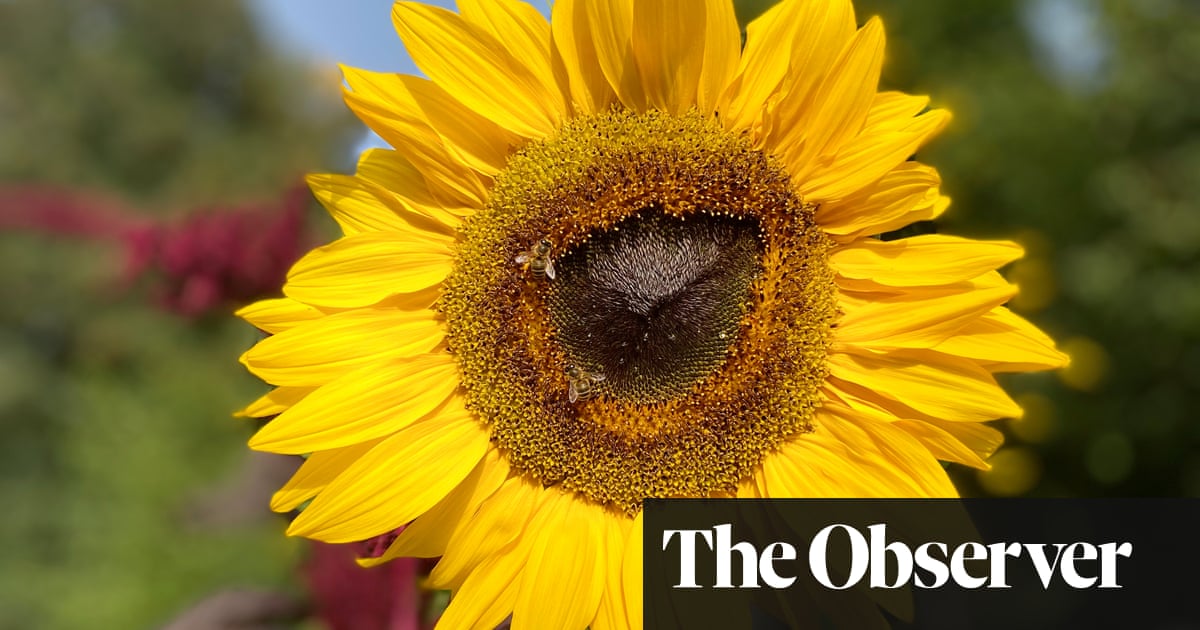
The Urban Nature Project, the Natural History Museum’s transformation of the five-acre open space in front of it, is a triumph of cultural and architectural multitasking. It educates, surprises and delights. It is a living laboratory for expert research. It makes scientific theory tangible and visible. It opens up a multilevel site to people in wheelchairs. It aims to handle large crowds effectively and with grace. It makes you see the London museum’s glorious Victorian building as never before. And it brings a new and improved version of its beloved diplodocus skeleton, icon of millions of childhoods, back to its South Kensington base.
The £25m project, supported by Amazon Web Services, the National Lottery Heritage Fund and several other sources, gains strength from its sense of purpose, which is to raise understanding of climate emergency. It aims to give physical shape to the perspective of time. It answers in three-dimensional and material form the ignorant cry that “climate has always been changing” – yes it has, but not at the speed it is now, except when a giant asteroid hit, or immense eruptions spewed destructive gases into the air.
So this great British institution, the second most popular visitor attraction in the country (after the British Museum), a Grade I-listed building, the work of the architect Alfred Waterhouse (also author of Manchester town hall), is now approached as never before. As you emerge from the Victorian tunnel that connects it to South Kensington underground station, you find yourself in a ravine layered with rough-hewn rocks, laid at a slant, that rises obliquely towards one of the museum’s neo-romanesque towers. Newly installed tree ferns, strange and primeval, stand alongside mature London planes, planted when the museum was first built.
This is the start of a three-dimensional timeline that takes you in a sideways direction towards the museum’s grand front door. The first and lowest rocks that you see are the oldest, three-billion-year-old Lewisian gneiss from the Isle of Barra. They get younger as you progress upwards and along – Welsh slate, Devonian sandstone, Puddingstone from Hertfordshire, whose ages are 515m, 415m and 55m years old respectively. There are 26 different types, all but two sourced from the UK, some of them waste material from quarries or road-building sites.
Plants start to appear along the route, of developing complexity – moss, ferns, pines, flowers – and creatures. The outline of an arthropleura, a 2.5 metre, 50kg millipede from the carboniferous era, is set into the pavement. There’s a megazostrodon, a somewhat rat-like early mammal, made out of brass, and the skeleton of a hypsilophodon, an arrestingly small dinosaur. And there’s a diplodocus, cast in bronze, from the lifesize plaster cast that stood in the museum’s great hall, now in Coventry as part of a long tour of the country. The new version, named Fern, is better than Dippy – more accurately assembled, more poised, its great bulk ending in a curved whip of a tail, and in a setting that evokes something of the Jurassic landscape this animal would have known.
This epic sequence ends with a narrow strip that represents the span of human life on Earth, the point being made that this is a tiny proportion of the whole. From here you reach the museum’s grand portal, off to your right, or you can continue straight ahead into the other part of the remade exterior, the more gentle and reflective Nature Discovery Garden, an enhanced remake of what was the Wildlife Garden. Here are areas of woodland, grassland, hedgerow, wetland and other habitats that “showcase the rich diversity that can be found in the UK’s urban spaces”. It’s designed to immerse visitors, especially children, in nature, with the help of listening funnels through which you can hear munching beetles, and ponds held by waist-height walls, such that you can get close to the life on the water.
The Urban Nature Project is a work of many hands, led by the museum’s Project Delivery Office and delivered by (among others) the landscape architects J&L Gibbons, the architects Feilden Fowles (also responsible for the inventive dining hall at Homerton College, Cambridge), and the contractors Walter Lilly. The engineers Structure Workshop helped make the bronze diplodocus stand up. It looks like a true collaboration, in which none of the elements – building, nature, science, visitor experience – dominate, but work towards the same goals.
You can’t, for example, put the ravine walls into any one category. They are geological and educational, landscape and architecture, with each stone carefully positioned to bring the best out of its veining, texture and colour, the whole ensemble being a rich array of pinks, yellows, greens and greys. There are two new buildings – a cafe (opening in the autumn) and a nature activity centre, whose handsome timber-and-stone construction quietly echoes the themes of the ensemble, and whose large, glazed openings return attention back to the nature outside.
The whole is a zone of unforced wonder in which everything, including the human-made, is a potential exhibit. The gardener’s compound of sheds and planting beds, a practical necessity, is on view. Waterhouse’s palatial structure is brought into the conversation, with viewing slots cut in upright stones to focus on the sculptures of animals on his ornate facade. The swales, gutters and drains through which rainwater is gathered and recycled are conspicuous and well-made features. The stacked-up blocks on a new pillar on the activity centre are offset from each other, which reminds you of their nature as stones. You could, if you choose, see the background of west London street architecture as part of the show, the minerals of construction being also products of geological time.
The project is empowered by the clarities of science, but there are also aspects of fiction. Jurassic landscapes cannot be perfectly recreated, and there is no pretence to do so. The Waterhouse architecture, striated with blue-grey and yellowish faience, anachronistically contributes to the general mood of weird geological spectacle. The diplodocus derives from (and always did) a confection of bones from several animals, male and female, a non-binary dinosaur.
This remade open space, accessible without booking or queueing, is also a city park, a nice place to sit and stroll. It’s a romantic landscape in which, thanks in part to the fact that it is two or so metres below street level, you can feel removed from the city around. It’s hard to want more from a single project than this one gives.












